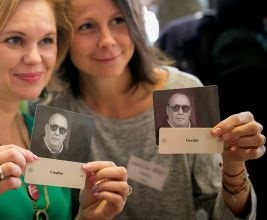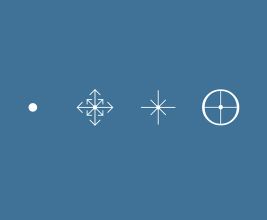By POINTS OF YOU®
Have you ever wondered why there are people who can draw well, yet can’t add two and two?
Or why someone who is able to grasp complex equations can’t write a one-page essay?
It’s all a matter of which side of the brain dominates: the left, or the right.
The human brain is divided into two lobes, referred to by laypeople as the “left brain” and “right brain”.
Each part of the brain is responsible for various physical and cognitive actions and responses.
Over the years, many theories have developed claiming that each of the sides “thinks” differently,
and how some individual processes the incoming information is related to which side of her brain dominates.
The cards in the Points of You® toolkits are a vital part of what makes it – a sharing game.
Rather than being a win-or-lose game, our games allows all of us to participate by working together.
This sharing game is part of the associative cards genre.
Associative playing cards give participants absolute freedom to shape the game as they see fit,
thereby encouraging them to develop an independent and creative approach to their lives.
A topic is presented on each card using a word and a concrete, real-life photo.
The combination between the two isn’t necessarily obvious, and at times even creates deliberate dissonance.
Each photo was carefully selected with the sole agenda of presenting the topic using a visual that
isn’t normally associated with the topic, in order to optimally activate our spectrum of thoughts and feelings.

Photo card from The Coaching Game
Right Brain
Those who rely on their right brain tend to be more intuitive and have more evolved imaginations,
and are more creative, associative, and visual. They are more tuned in to their souls and their feelings.
This side is less evolved in most of us.
The photographs directly appeal to our intuitions and feelings, and occasionally even bypass rational thinking,
which screens out those things we’d rather keep at a distance.
This quality, considered characteristic of images, enables them to evoke reactions that we find hard to express with words –
thereby giving them a magical quality.
Just like works of art that affect the observer merely by viewing them or dreams we recall in the morning yet
find hard to describe in words, we connect with images on an unconscious, emotional level.
The photo addresses the right side of the brain: the feminine, creative, intuitive, associative and visual side.
This side is connected to the “spirit”, the side that for most of us is less developed.
Simultaneously drawing from the two sides of the brain allows us to see the world from a new point of view.
A kind of reciprocal fertilization leads to the birth of new perceptions.
Therefore, the associations evoked as a result of images are mainly connected to feelings.
Left Brain
Left-brain types tend to be more logical in their thinking, more structured and organized, they
know how to define priorities and practices, and they engage in thinking, reading, writing, and logic.
This side is more evolved in most of us. The problem is that usually the “manager”, or the left
side, suppresses the “creator”, or the right side.
This mechanism perpetuates and limits how we look at art, our thoughts, and our dreams.
The word represents the logical-analytical thinking that was and is still considered a traditionally
male mode of thinking, with the left brain being in charge. The photo represents the emotion,
creativity, and intuition of our “female” side, led by the right side of the brain.
The polar combination between qualities that are considered female and qualities that are considered male,
when joined create a harmonious whole.
The word addresses the left side of the brain, the side that we use 85% of the time.
The left side of the brain is responsible for activities such as thinking, reading, writing and logic.
It is the masculine side, organizing, managing, cataloguing, and defining priorities. For most of us,
this is the more developed side of the brain.
Words, on the other hand, mainly appeal to the intellect:
They are often connected to how we look at things affecting our conscience,
our day-to-day lives, and our relations with others, meaning our rational, analytical thinking.

Photo from Faces Game
A bridge between Right & Left
Yet integrating the two sides enables us to see the world from a new point of view:
a sort of cross-fertilization that leads to the birth of new viewpoints.
Even associations evoked by a few words originate from the same “tiny box” where we store words and their meanings.
Combining a photo with a word appeals both to the left and the right hemispheres of the brain.
This simultaneous stimulation creates an extraordinary phenomenon: Our rational and our intuitive
responses work in tandem, merging and creating new associations.
“The integration of the picture with the word addresses both the left and right lobes of the brain.
This simultaneous stimulus creates an extraordinary phenomenon: All at once our rational reaction
and our intuitive reaction are activated, blending together to create an association.”
Waltraud Kirschke (1999) Secrets of the Peeling




